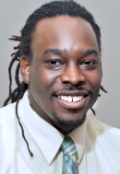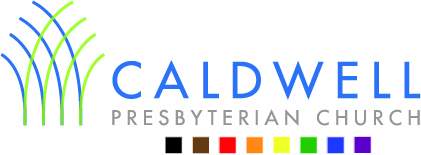
“We can no longer talk of (ministry) or any other matters exclusively in a white, middle-class, Eurocentric fashion that deliberately ignores, or else fails to realize the normalcy of pluralism in every part of the world.”
– Emmanuel Y. Lartey, In Living Color: An Intercultural Approach to Pastoral Care and Counseling
Dear Caldwell,
On Saturday, I leave for two weeks of study as I continue work toward a doctorate in ministry through Pittsburgh Theological Seminary. As I’ve mentioned before, my program is very practical, focused on the church today and, as important, tomorrow.
I’ll be taking two intensive classes. The first focuses on pastoral and congregational care in today’s diverse and multi-cultural context, including thinking about care for oppressed populations as an issue of justice. The second focuses on congregation and community in rapidly changing urban circumstances, “looking sociologically and theologically at social and religious dynamism and developmental dilemmas within urban contexts,” to quote the syllabus.
I’ve enjoyed (and passed!) the six classes I’ve completed so far. Each has had direct connection and value to what we are doing together here. As you can tell from the course descriptions, as well as the out-take at the top of this post from one of the books we’ve read, these upcoming classes could hardly connect more direct to life at Caldwell. I look forward to sharing some of what we discuss when I am back in the pulpit on Feb. 7. (If you’re geekily interested, I’ve put some of our reading lists at the bottom of this post.)

Speaking of connecting, Rev. James Ford connected with our mission and context beautifully in his message Sunday. He focused on the unlikely friendship between David, who arose from limited circumstances, and Jonathan, who, as grandson of Moses and son of the great Hebrew leader Saul, came from what we would say is an advantaged background. 1 Samuel 18:1 reads, “the soul of Jonathan was knit to the soul of David, and Jonathan loved him ….”
Their mutual devotion came to be pivotal in David’s escape from Jonathan’s resentful father, allowing David to rise to power as perhaps the ancient Israelites’ greatest leader. On Sunday, Rev. Ford likened their alliance to what is needed more in America today, the bonding of those of power and privilege with those who have been oppressed to bring about a more equitable and just nation.
As I told James after worship, and as I reflected on in last week’s blog, I “am Jonathan,” as many of us at Caldwell are. Here at Caldwell, we have both “Jonathans” and “Davids” – in our midst and in those we serve in Christ’s name. This presents us with the blessed the opportunity to “knit our souls together” in ministry, building genuine relationships across all kinds of diversity to bring about more empathy in ourselves and a more equitable and just city and nation.
But … we cannot do it without love, the same kind of genuine love that Jonathan and David shared, a bond forged by God that ultimately served the greater good. Hopefully, in addition to love, we have respect for each other and the humility to know our own individual shortcomings. Centuries after Jonathan and David, Christ explained all this through his parables, the Sermon on the Mount and the example of his own life. “In as much as you have done it for the least of these ….”
While I’m away, you’ll be blessed by sermons in worship by former Intern in Ministry Phanta Lansden (this Sunday) and current Intern Henry Trexler (on the 31st). Please come to worship and support them. Please contact Anne Hunter Eidson or Sally Herlong in the office if you need anything.
While I am gone, look for two new opportunities for study and spiritual development coming up during Lent (Ash Wednesday is the second week in February). I look forward to seeing you upon my return.
In Christ,
John
Course Reading:
- Emmanuel Y. Lartey, In Living Color: An Intercultural Approach to Pastoral Care and Counseling (London: Jessica Kingsley, 2003) – read whole text
- Ronald W. Richardson, Creating a Healthier Church: Family Systems Theory, Leadership, and Congregational Life (Minneapolis: Fortress Press, 1996)
- Sheryl A. Kujawa-Holbrook and Karen B. Montagno, Eds., Injustice and the Care of Souls: Taking Oppression Seriously in Pastoral Care (Minneapolis: Fortress Press, 2009)
- Chanequa Walker-Barnes, Too Heavy a Yoke: Black Women and the Burden of Strength (Eugene, OR: Cascade Books, 2014)
- Sam Bass Warner, The Urban Wilderness: A History of the American City, University of California Press, 1995: 3-14, 85-112;
- William Julius Wilson, When Work Disappears: the World of the New Urban Poor, 1997: pp. 3-24;
- Alan Ehrenhalt, The Great Inversion and the Future of American Cities, 3-21;
- William Julius Wilson, When Work Disappears: the World of the New Urban Poor, 1997: pp. 51-86;
- Drew Smith, Beyond the Boundaries: Low-Income Residents, Faith-Based Organizations and Neighborhood Coalition Building, 2003: pp. 4-14
- Pew Forum, “Nones” on the Rise: One in Five Adults have no Religious Affiliation, 2012: pp. 7-74;
- Interfaith modeling: Diana Eck, A New Religious America: pp. 335-385;
- Cross-stratification modeling: Drew Smith, “Higher Ground”: the Elusive Church Consensus on Equality, Empowerment, and Community in Urban America,” Pittsburgh Theological Journal, 2014: pp. 25-39; and R. Drew Smith, Beyond the Boundaries: Low-Income Residents, Faith-Based Organizations and Neighborhood Coalition Building, 2003: pp. 16-35
